Categories
DZW1 series intelligent universal low-voltage circuit breakers (hereinafter referred to as circuit breakers) are applicable to distribution networks with AC 50Hz, rated voltage of 660V (690V) and below, rated current of 400A ~ 6300A, and are used to
- Product Overview
- Technical Parameter
- Text and image analysis
- Product Features
Purposes and application scope
DZW1 series intelligent universal low-voltage circuit breakers (hereinafter referred to as circuit breakers) are applicable to distribution networks with AC 50Hz, rated voltage of 660V (690V) and below, rated current of 400A ~ 6300A, and are used to distribute electric power and protect the lines and power supply equipment from the hazards of overload, undervoltage, shortcircuit, single-phase grounding and other faults. The circuit breaker has intelligent protection function and precise selective protection, which can improve the reliability of power supply and avoid unnecessary power outage. It is also equipped with an open communication interface, which can carry out “four remote” to meet the requirements of the control center and automation system.
The impulse withstand voltage of the circuit breaker is 8000V at an altitude of 2000 meters (revised according to the standard at different altitudes, with the maximum not exceeding 12000V). This circuit breaker without intelligent release and sensor can be used as an isolator and is labeled as -/*.
The circuit breaker conforms to GB14048.2 Low-voltage Switchgear and Control Equipment Part - Low-voltage Circuit Breakers and IEC947-2 Low-voltage Switchgear and Control Equipment Part - Circuit Breakers.
Model meanings and classification

Category
Classified by installation method: a. Fixed type b. Drawer type
Classified by number of poles: a. Three-pole B. Four-pole
Classified by operation mode: a. Electric operation b. Manual operation (for overhaul, maintenance)
Type of release
a. Intelligent overcurrent controller b. Undervoltage instantaneous (or delayed) release C. Shunt trip
Intelligent overcurrent control performance:
● Intelligent controllers are divided into: H-type (communication), M-type (ordinary intelligent), L-type (economic);
● It has the functions of overload long-time delay inverse time, short-time delay inverse time, fixed time and instantaneous. The protection characteristics required for the composition can be set by the user;
● Single-phase grounding protection function;
● Display function, set current display, operating current display, voltage display for each line (voltage display should be proposed at the time of ordering);
● Alarm function: overload alarm;
● Self-inspection function: overheating self-inspection, microcomputer self-diagnosis;
● Test function: tests the operating characteristics of the controller.
Normal working conditions and installation conditions
● Ambient air temperature
● The altitude of the installation site does not exceed 2000m
● Atmospheric conditions
● IP grade: IP30
● Use category: category B or category A
● Installation category
The upper limit value does not exceed +40°C, the lower limit value does not fall below -5°C, and the 24h average value does not exceed +35°C;
Note: For working conditions with the lower limit of -10℃ or -25℃ , the user should declare to our factory.
For working conditions with the upper limit exceeds +40°C or the lower limit is below -10°C or -25°C, the user should consult with our factory.
Atmospheric relative humidity does not exceed 50% at an ambient air temperature of +40°C. Higher relative humidity is possible at lower temperatures, with a monthly average maximum relative humidity of 90% in wet months, and with an average minimum temperature of +25°C in that month, taking into account condensation occurring on the surface of the product due to temperature
changes. In case of exceeding the regulations, the user should consult with our factory.
Circuit breakers with rated operating voltages of 660V (690V) and below and undervoltage releases, and primary coils of power transformers are used for installation category IV; the installation category of auxiliary circuits and control circuits is III.
Installation conditions
The circuit breaker shall be installed according to the requirements of this manual, and the vertical inclination of the circuit breaker shall not exceed 5° (the inclination of the mine circuit breaker shall not exceed 15°).
Structure overview
The fixed type circuit breaker is mainly composed of contact system, intelligent controller, manual operating mechanism, electric operating mechanism and mounting panel;
The drawer type circuit breaker is mainly composed of contact system, intelligent controller, manual operating mechanism, electric operating mechanism and drawer base.
The circuit breaker is in the form of three-dimensional arrangement, characterized by compact structure and small volume. The contact system is enclosed in an insulating bottom plate, and each phase of the contact is also separated by an insulating plate to form a small chamber, and the intelligent controller, manual operating mechanism and electric operating mechanism are sequentially arranged in front of it to form their own independent units, if one of the units is broken, it can be completely removed and replaced with a new one.
The drawer type circuit breaker consists of a plug-in circuit breaker and a drawer base. The guide rail inside the drawer base can slide in and out, and the plug-in circuit breaker is located on the guide rail to enter and exit the drawer, and the main circuit is connected through the insertion of the busbar on the circuit breaker and the insertion of the bridge contact on the drawer base.
There are three working positions for the drawer type circuit breaker: “connection” position, “test” position, “separation” position, the position change is realized by rotating the handle in or out. Indication of the three positions is shown by a pointer on the drawer base crossbar.
When in the "connection" position, both the main circuit and the secondary circuit are connected; when in the "test" position, the main circuit is disconnected and separated by an insulating partition, and only the secondary circuit is connected, at this time, some necessary operating tests can be carried out; when in the "separation" position, both the main circuit and the secondary
circuit are disconnected. Moreover, the drawer type circuit breaker has a mechanical interlocking device, and the circuit breaker can be closed only in the connection position or the test position, but not in the middle position between connection and test.
Circuit breaker front indication
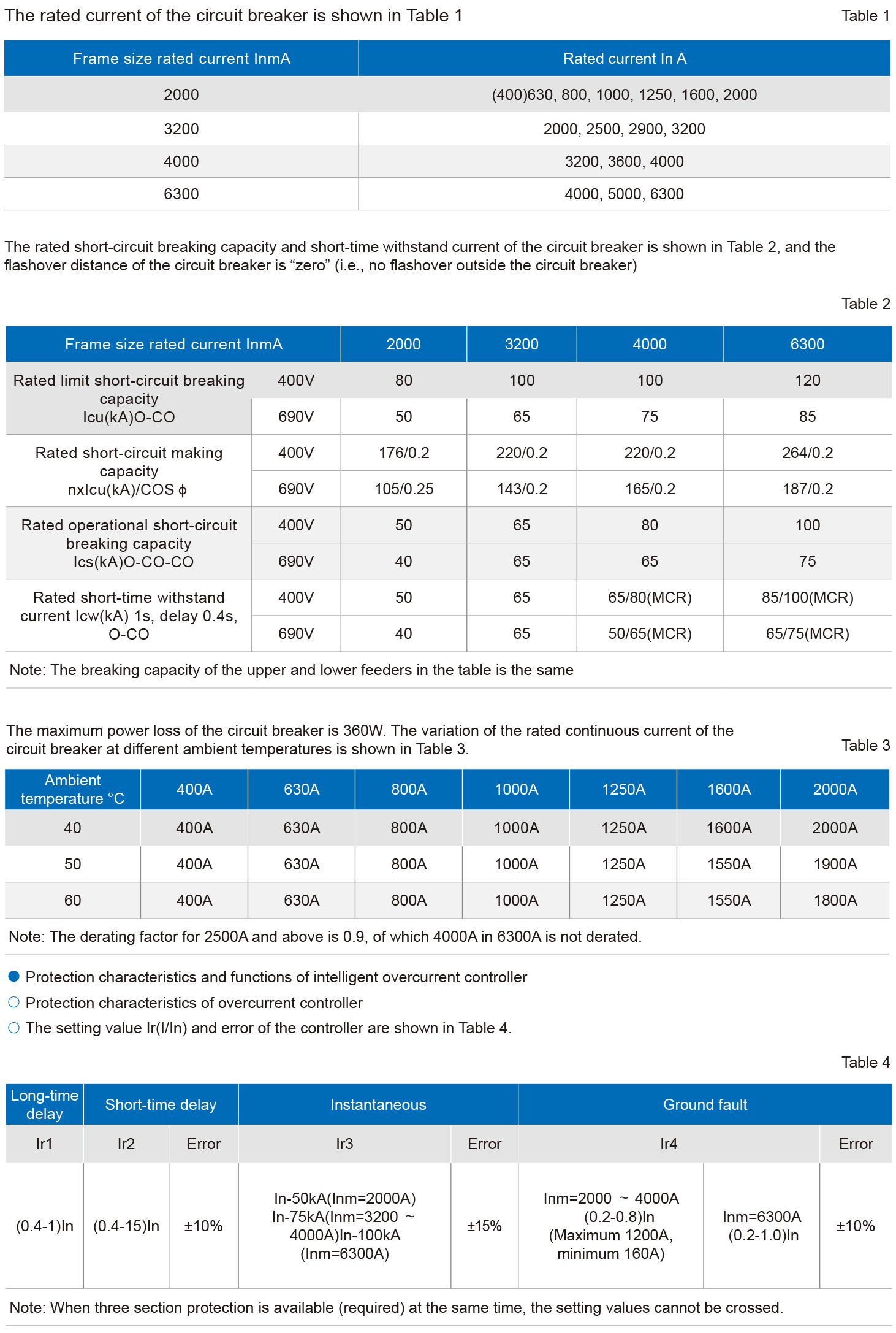
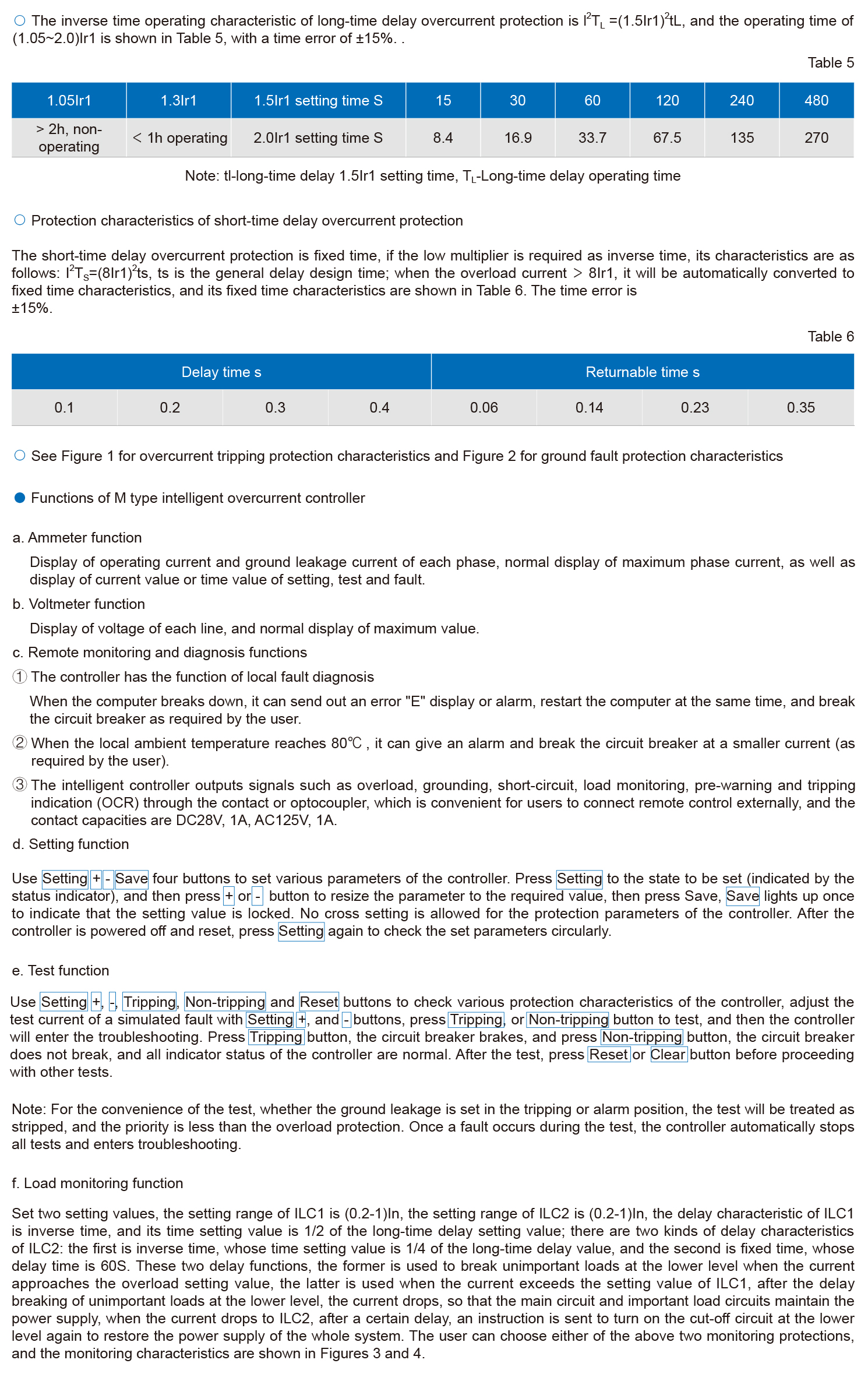
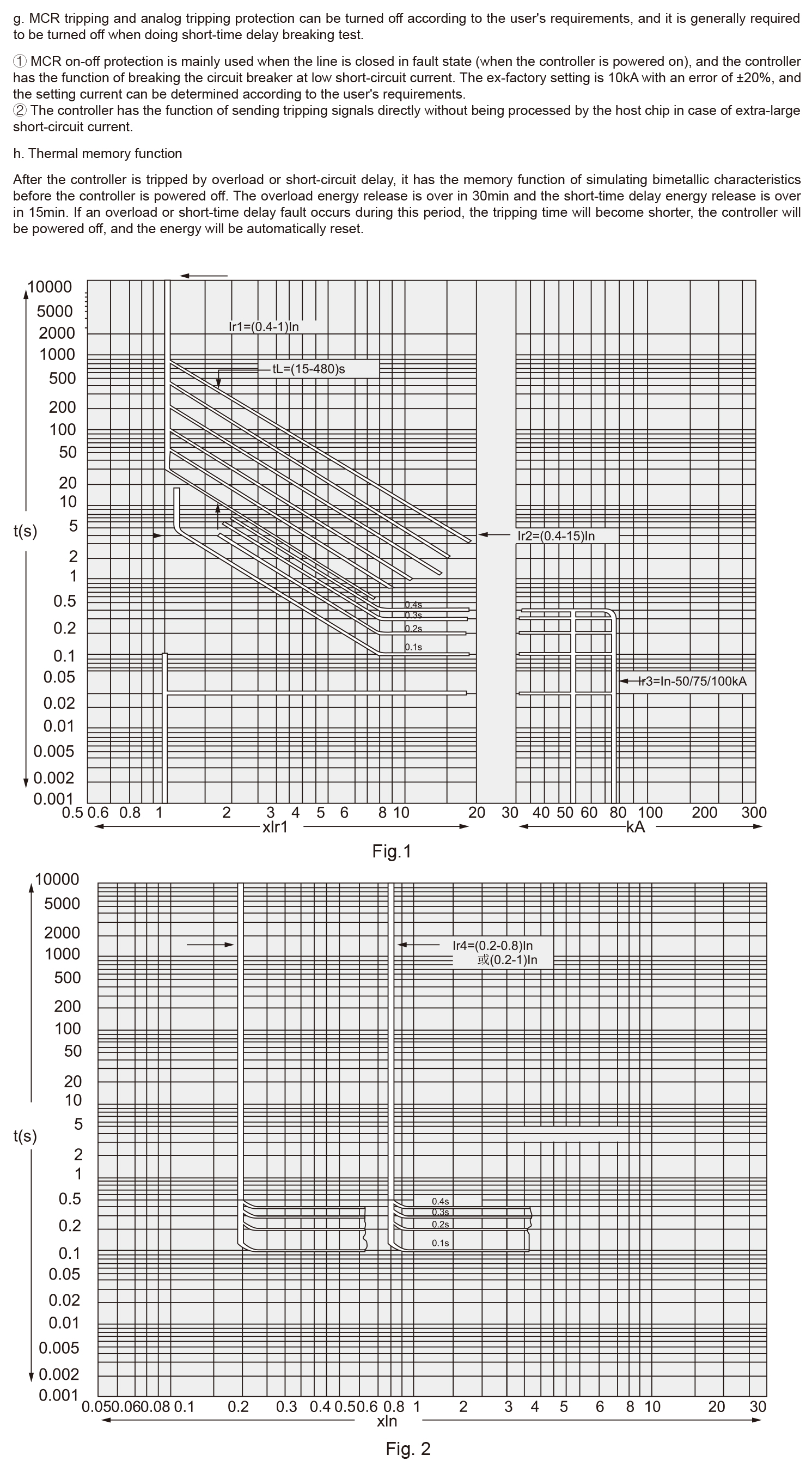
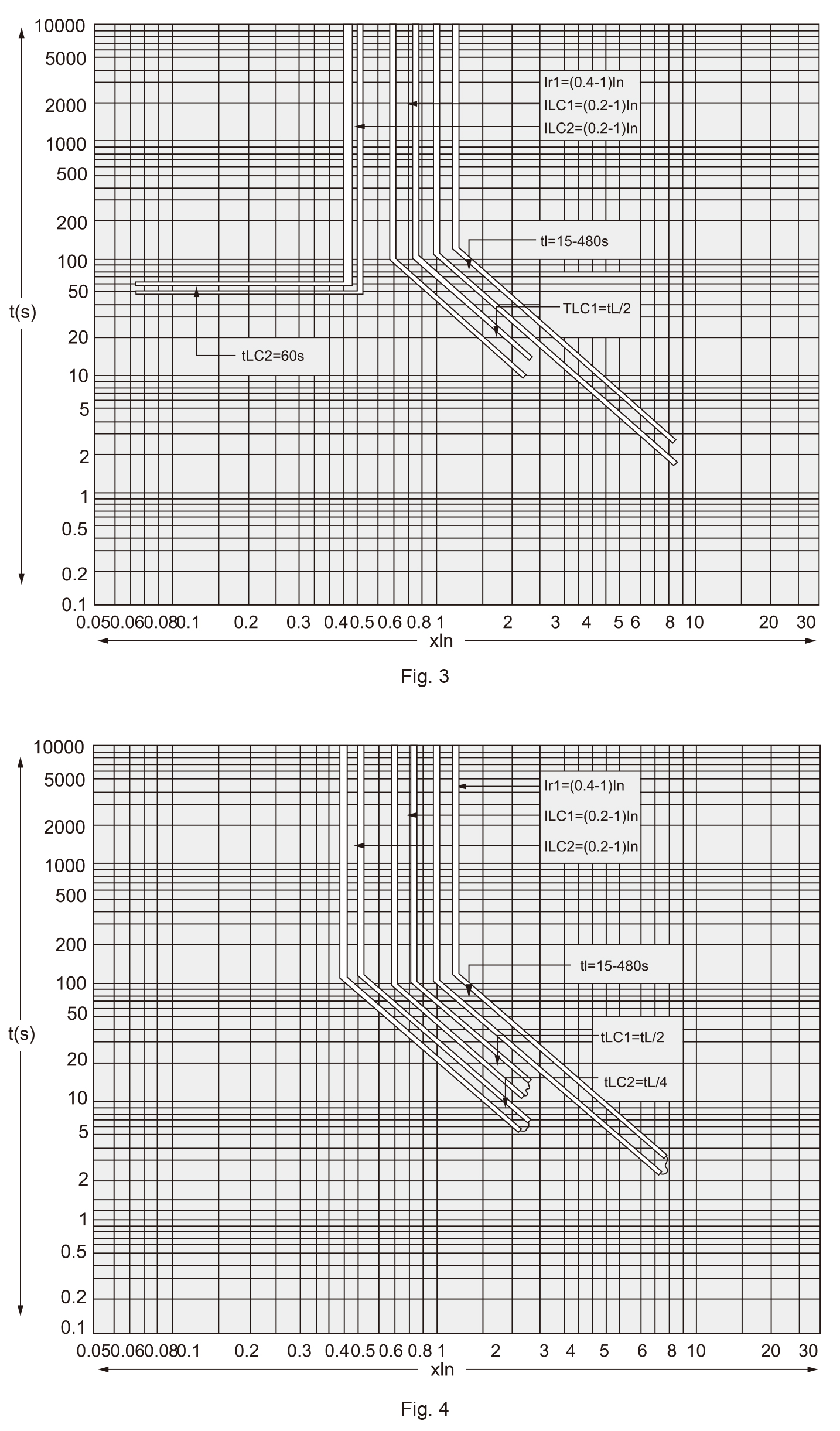
H-type intelligent controller
In addition to all the functions of M-type, it also has a serial communication interface, through which a local area network system (hereinafter referred to as the system) with master-slave structure can be formed, with 1-2 computers as the master station, and a number of intelligent circuit breakers or other communicable components as the slave stations; the network structure of the
system is shown in the following figure, for the circuit breaker unit, the system can realize the long-distance “four remote” functions: monitoring of various grid parameters and operation parameters, monitoring of the current operation status of intelligent circuit breakers, adjusting and downloading of various protection limit parameters, and the opening and closing operation control of intelligent circuit breakers. The system is applicable to the construction and renovation of power distribution monitoring systems in various power stations, power plants, medium and small substations, industrial and mining enterprises, buildings and so on.
The connection diagram of special communication protocol interface is as follows:
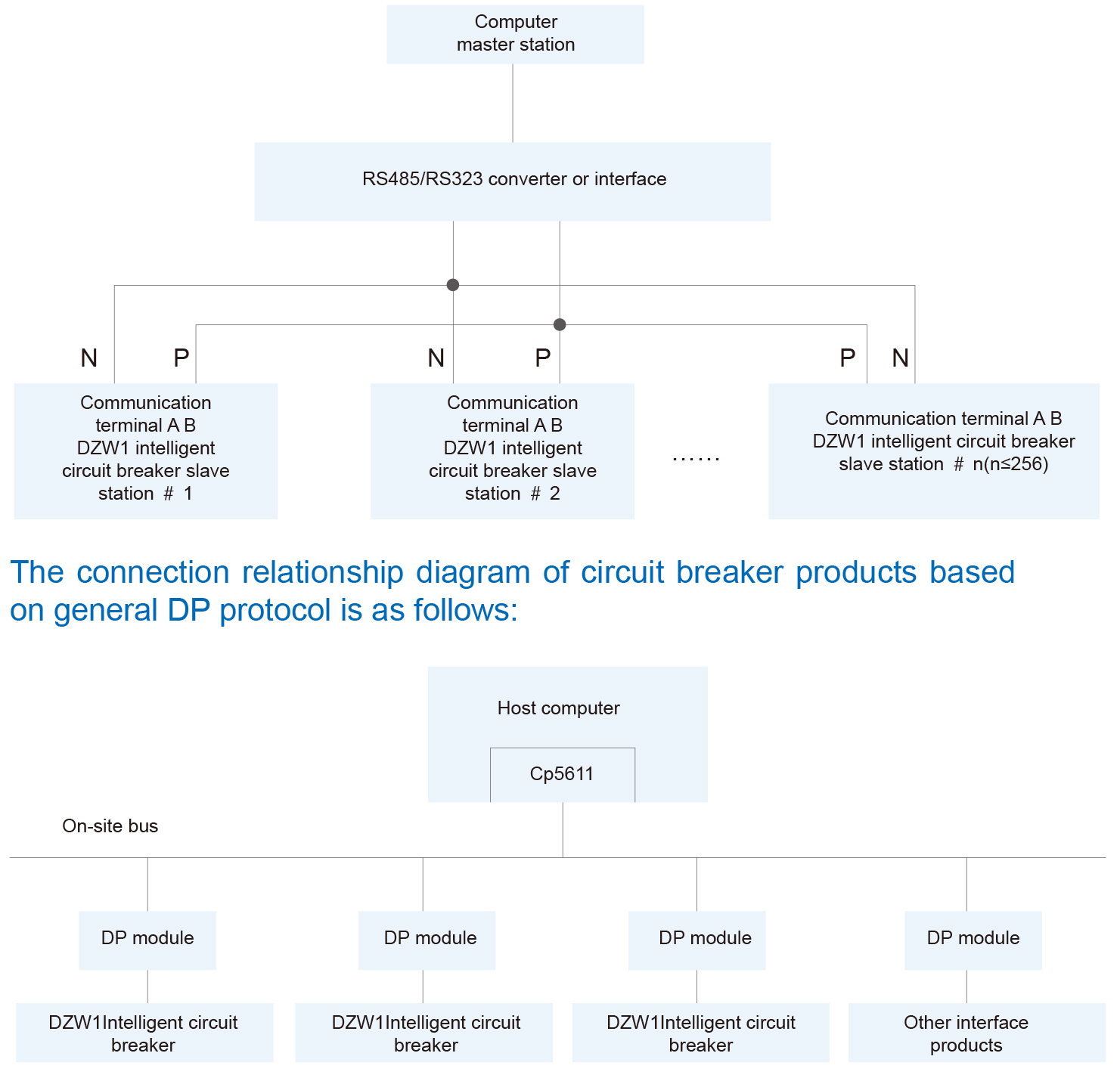
System composition
● Hardware structure of the data communication network system
○ The intelligent circuit breaker provides a standard RS485 communication interface, which leads from No.10 and No.11 outgoing lines of the circuit breaker;
○ Communication medium for system connection: Class A shielded twisted pair.
● Main characteristics of network
○ Blinked list data transmission mode, the product can provide a variety of communication protocols: Low-voltage Electrical
Apparatus Data Transmission Communication Protocol V1.0, PROFIBUS-DP, MODEBUS and so on.
○ Strict master-slave mode, i.e., the master station is the initiator and controller of communication, and the slave station can only
communicate with the master station, but not directly with other slave stations.
○ The communication baud rate is 9600bit/s, the communication distance is 1.2km, and the typical application of communication
baud rate for PROFIBUS-DP can reach 187.5 kbit/s.
● Monitoring software
YSS 2000 configuration software can realize the configuration application of the required monitoring and management software according to different engineering requirements. For intelligent circuit breakers, operation monitoring operation and various daily management functions can be realized.
System functions
● Remote control
Remote control refers to the operational control of energy storing, closing, and opening each slave circuit breaker in the system through the master computer. The operator selects the corresponding object from the system interface, clicks the remote control button with the mouse, and the system provides the current operation state of the corresponding object.
After the operator inputs the operation password, the remote control “close” or “open” command can be sent. The system will transmit the instruction to the corresponding circuit breaker slave station. After receiving the instruction, the slave station will perform such operations as breaking, closing and energy storing according to the established time sequence, and report the
remote control results to the master station.
● Remote regulation
Remote regulation refers to setting the protection setting value of the slave station through the master computer. The protection setting value tables of all slave stations are stored in the master computer. The operator selects the corresponding object from the system interface and clicks the remote regulation button with the mouse, then the system provides the current settings of all the
protection setting values of the corresponding object and the protection setting value table of the object. After the operator inputs the operation password, he can select the required parameters from the parameter table, and then click the corresponding button, then the master station downloads the parameters to the corresponding slave station and reports the remote adjustment results.
After receiving the instruction, the slave station modifies its own protection setting value.
● Telemetering
Telemetering refers to the real-time monitoring of power grid operation parameters of each slave station through the master computer. The working parameters submitted by the communication substation to the upper computer are as follows: real-time A, B, C and N phase current values of each substation, voltage values of UAB, UBC, UCA.
Fault record can record the following fault parameters
The current values of A, B, C, and N phase at the time of the fault, the voltage values ofUAB, UBC, UCA, fault type, fault operating time, and the fault will be recorded in the fault database.
The computer displays the current real-time current and voltage of each substation in the form of bar chart and absolute value table, and displays the running state of each node in real-time curve.
● Remote communicationRemote communication refers to checking the model, closing and opening status, various protection setting values, operation and fault information of the slave station through the master computer. The parameters submitted by the slave station circuit breaker to the upper computer mainly include: switch model, switch status (closed/open), fault information, alarm information, various protection values.
● Other system functions
In addition to the four remote operation and control functions, the system can also carry out a variety of management functions: accident alarm (information screen, screen promotion, event printing, accident dialing, audible alarm), event records, maintenance signs, shift management, load trend analysis, and printing of various reports.
● L-type intelligent controller
L-type controller uses coding switch and toggle switch setting mode, with four section protection characteristics such as overload long-time delay, short-circuit short-time delay, instantaneous and ground leakage, as well as functions such as fault state and load current light column indication, but there is no digital display, and its functions are not as complete as M-type and H-type, for the
user to use in general occasions.
● Operation performance of circuit breaker
The operation performance of the circuit breaker is expressed by the number of operation cycles, see Table 7

● The operating voltages and required power of shunt release, undervoltage release, electric operating mechanism, energy-releasing (closing) electromagnet, and intelligent controller of circuit breaker are shown in Table 8.
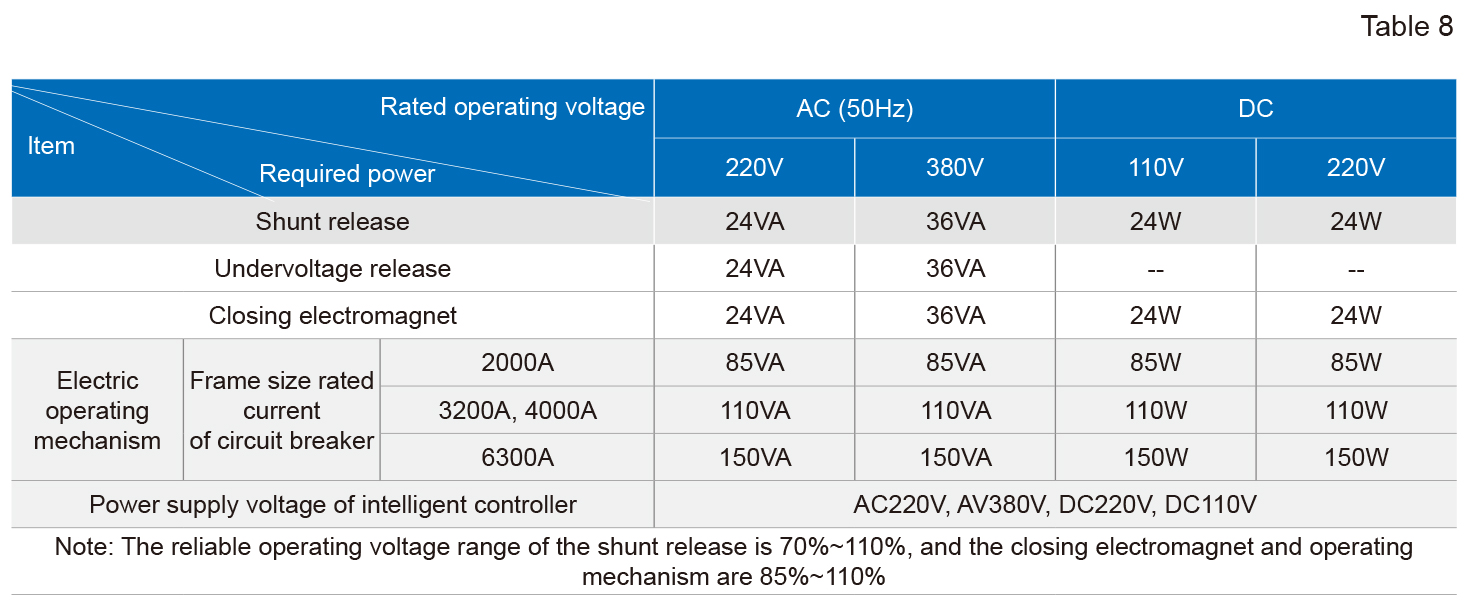
● The performance of the circuit breaker's undervoltage release is shown in Table 9

● Performance of auxiliary contact
○ The agreed heating current of the auxiliary contact is 6A
○ Auxiliary contact form: four normally open and four normally closed or six normally open and six normally closed.
○ Abnormal making and breaking capabilities of the auxiliary contact.

○ Making and breaking capabilities of the auxiliary contact under normal conditions are shown in Table 11

● Open position key lock
The circuit breaker has an “open position key lock” accessory (provided upon order requirements), which can lock the circuit breaker in the open position. At this time, the circuit breaker cannot be closed with the closing button or the energy-releasing (closing) electromagnet.
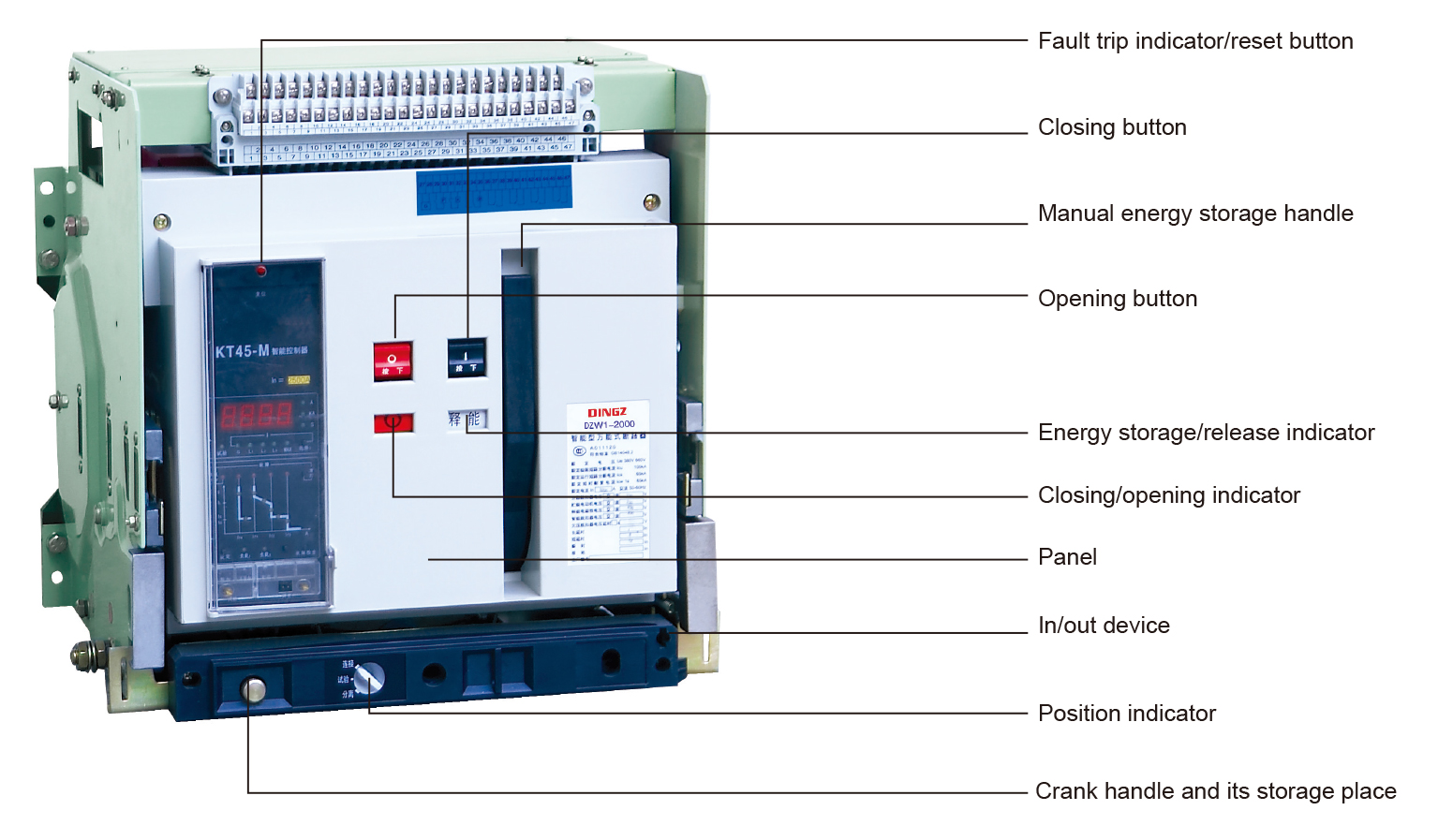
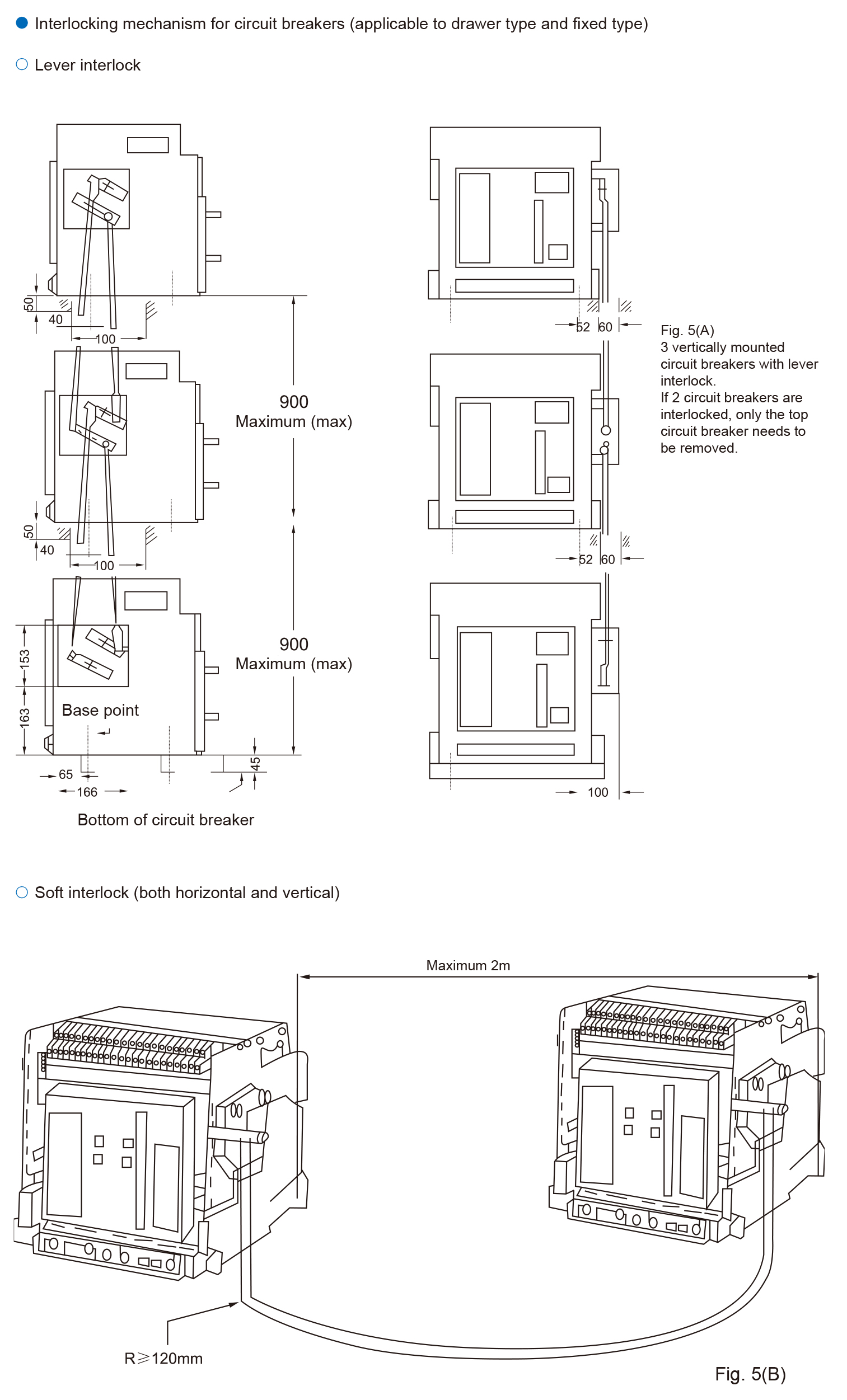
A. Applicable to distribution networks with AC 50Hz, rated voltage of 690V and below, rated current of 400A-6300A.
B. Intelligent, precise and reliable protection function.
C. Divided into fixed type and drawer type.
◉ Related Suggestion
















